- Home
- Penelope Lively
The Photograph
The Photograph Read online
Table of Contents
PENGUIN BOOKS
Title Page
Copyright Page
Glyn
Elaine
Elaine and Glyn
Oliver
Elaine and Nick
Glyn and Oliver
Polly
Glyn and Kath
Nick
Elaine and Kath
Polly and Nick
Oliver and Nick
Oliver and Sandra
Glyn and Myra
Elaine and Polly
Kath
Voices
That Day
Mary Packard
Conclusions
Praise for Penelope Lively’s The Photograph
“[Lively] has written a novel that line by line, page by page, seems like a marvel of narrative fluency and pose, deftly written, psychologically gripping and casually authoritative . . . beautifully observed and finely nuanced.”—The New York Times
—Entertainment Weekly
—Los Angeles Times Book Review
—The Atlantic Monthly
—The Washington Post Book World
—The Women’s Review of Books
“Lively sustains her reputation as a master of literary economy and expert prober of shadowy regions of the heart.”
—The Seattle Times
—The Philadelphia Inquirer
—Rocky Mountain News
—The Free Lance-Star (Fredericksburg, VA)
—The Times Literary Supplement
—The Guardian (London)
—Time Out London
PENGUIN BOOKS
THE PHOTOGRAPH
Penelope Lively is the author of more than twenty books of fiction and nonfiction, including A House Unlocked and the Booker Prize-winning Moon Tiger. In addition to the Booker Prize and the Whitbread Award, she has received the Carnegie Medal and is a fellow of the Royal Society of Literature, PEN, and the Society of Authors. Penelope Lively lives in London.
PENGUIN BOOKS
Published by the Penguin Group
Penguin Group (USA) Inc., 375 Hudson Street, New York, New York 10014, U.S.A.
Penguin Books Ltd, 80 Strand, London WC2R 0RL, England
Penguin Books Australia Ltd, 250 Camberwell Road, Camberwell, Victoria 3124, Australia
Penguin Books Canada Ltd, 10 Alcorn Avenue, Toronto, Ontario, Canada M4V 3B2
Penguin Books India (P) Ltd, 11 Community Centre,
Panchsheel Park, New Delhi - 110 017, India
Penguin Books (N.Z.) Ltd, Cnr Rosedale and Airborne Roads, Albany, Auckland, New Zealand
Penguin Books (South Africa) (Pty) Ltd, 24 Sturdee Avenue,
Rosebank, Johannesburg 2196, South Africa
Penguin Books Ltd, Registered Offices: 80 Strand, London WC2R 0RL, England
First published in the United States of America by Viking 2003
Published in Penguin Books 2004
Copyright © Penelope Lively, 2003
All rights reserved
PUBLISHER’S NOTE This is a work of fiction. Names, characters, places, and incidents either are the product of the author’s imagination or are used fictitiously, and any resemblance to actual persons, living or dead, business establishments, events, or locales is entirely coincidental.
eISBN : 978-0-142-00442-5
1. Widowers—Fiction. 2. Adultery—Fiction. 3. Sisters—Fiction.
4. England—Fiction. I. Title
PR6062.I89 P48 2003
823’.914—dc21 2002032420
The scanning, uploading and distribution of this book via the Internet or via any other means without the permission of the publisher is illegal and punishable by law. Please purchase only authorized electronic editions, and do not participate in or encourage electronic piracy of copyrighted materials. Your support of the author’s rights is appreciated.
http://us.penguingroup.com
Glyn
Kath.
Kath steps from the landing cupboard, where she should not be.
The landing cupboard is stacked high with what Glyn calls low-use material: conference papers and student references and offprints, including he hopes an offprint that he needs right now for the article on which he is working. The strata in here go back to his postgraduate days, in no convenient sequential order but all jumbled up and juxtaposed. A crisp column of Past and Present is wedged against a heap of tattered files spewing forth their contents. Forgotten students drift to his feet as he rummages, and lie reproachful on the floor: “Susan Cochrane’s contributions to my seminar have been perfunctory. . . .” Labeled boxes of photographs—Aerial, Bishops Munby 1976, Leeds 1985—are squeezed against a further row of files. To remove one will bring the lot crashing down, like an ill-judged move in that game involving a tower of balanced blocks. But he has glimpsed behind them a further cache which may well include offprints.
On the shelf above he spots the gold-lettered spine of his own doctoral thesis, its green cloth blotched brown with age; on top of it sits a 1980s run of the Yorkshire Archaeological Journal. Come to think of it, the contents of the landing cupboard are a nice reflection of his own trade—it is a landscape in which everything coexists, requiring expert deconstruction. But he does not dwell on that, intent instead upon this, increasingly irritating, search.
He tugs at a file to improve his view of what lies beyond and, sure enough, there is a landslide. Exasperated, he gets down on hands and knees to shovel up this mess, and suddenly there is Kath.
A brown foolscap-size wallet file, with her loopy scrawl across the flap: Keep!
She smiles at him; he sees her skimpy dark fringe, her eyes, that smile.
What is she doing here, in the middle of all this stuff that has nothing to do with her? He picks up the file, stares. He cannot think how it got here. Everything of hers was cleared out. Back then. When she. When.
Hang on, though. Here underneath it are a couple of folders, also with her handwriting: Recipes. Since when did Kath go in for serious cooking, for heaven’s sake? He opens the folder, flicks through the contents. Indeed, yes—cuttings from newspapers and magazines in the late 1980s, but petering out fairly rapidly, which signifies. He investigates the second folder, which contains receipted bills, many of them red-flagged second demands, which signifies also, and an incomplete series of bank statements, indicating a mounting overdraft.
It would seem that this assortment of her things got pushed in with his papers by mistake during the big clearing-out operation. The hurried, distracted clearing-out operation. Elaine had volunteered to sort out and dispose of Kath’s possessions. She missed this lot. And here they have lain ever since, festering.
Well, no, not exactly festering, but turning a little brown at the edges, doggedly degrading away as is everything else in here, doing what inanimate objects do as time passes, preparing to give pause for thought to those whose business is the interpretation of vanished landscapes.
The wallet file is brown anyway, so degradation is not much apparent. He dumps the folders on the floor and goes to sit on the top step of the stairs, holding the file.
He opens it.
Not much inside. Various documents, and a sealed brown envelope containing something stiff. Glyn sets this aside and goes through the rest.
A jeweler’s valuation for a two-strand pearl necklace and a pair of drop pearl earrings. Originally her mother’s, he seems to remember. Kath wore the earrings a lot.
Her medical card. And her birth certificate. Aha! So this is where that was, the absence of which caused considerable nuisance back then, necessitating a visit to Somerset House. No marriage certificate, one notes. That too had gone missing, making difficulties. And is still lost, it would seem. Not that that is, now, a problem.
Her O-level certificate. Seven subjects, A grades in all but one. Glyn scans this with some surprise. Well, well. Who’d have thought it?
The injunction on the file’s flap was presumably to herself. This was the repository for items she knew that she must hang on to, but—knowing herself—that she knew she was only too likely to lose. He experiences a stir of fondness, which disconcerts him. And he has been entirely diverted from the hunt for that offprint, which is a matter of some urgency. Fondness is overtaken by annoyance; Kath is getting in the way of his work, which was not allowed, as she well understood.
There is also a National Savings Certificate for £5, bearing a date in the mid-1950s. When she was about eight, for heaven’s sake. And some checkbook stubs and a Post Office savings book showing a balance of £14.58, and a clutch of letters, at which he glances. The letters are from Kath’s mother, the mother who died when Kath was sixteen. Glyn sees no reason to be interested in these and pushes them back into the file unread.
He is left with a semiopaque folder which turns out to hold a sequence of studio portraits of Kath. She is looking at him in glossy black and white, now made manifest entirely. Young Kath. A backlit Kath with bare shoulders, head turned this way or that, eyes to the camera or demurely lowered, provocative smile, contemplative sideways gaze. These would date from the aspiring-actress days, long before he knew her. Very young Kath.
Glyn studies these photos for quite a while.
Kath.
He returns everything to the file. There is now just this brown envelope. He notices for the first time that something is written on it. In her hand. Lightly penciled.
“DON’T OPEN—DESTROY.”
And for whom is this second instruction intended?
He opens the envelope. Within are a photograph and a folded sheet of paper. He looks first at the photograph. A group of five people; grass beneath their feet, a backdrop of trees. Two members of the group, a man and a woman, have their backs to the photographer. Of the other three, Elaine can be identified at once, visible between the two whose faces cannot be seen. Near to her stand another man and woman, whom Glyn does not recognize.
One of the back-turned pair is Kath—he would know that outline anywhere, that stance. The someone else, the man, is at first a bit of a teaser. Familiar, surely—the rather long dark hair, the height, a good head taller than Kath. A slightly hunched way of standing.
Glyn brings the photo closer to his face for more minute inspection. And then he sees. He sees the hands. He sees that Kath and this someone, this man, have their hands closely entwined, locked together, pushed behind them so that, as they stand side by side in this moment of private intimacy, this interlocking of hands would be invisible to the rest of the group.
Except to the photographer, who may or may not have been aware of what had been immortalized—the freeze-frame revelation.
And now Glyn recognizes the someone, the man. It is Nick.
He turns to the folded piece of paper that accompanied the photograph. He feels as though gripped by the onset of some incapacitating disease, but this paper requires attention.
Handwriting. A brief message. “I can’t resist sending you this. Negative destroyed, I’m told. Blessings, my love.”
No signature. None needed. Neither for Kath then, nor, now, for Glyn. Though confirmation is needed. Somewhere he will have an instance of Nick’s handwriting. A signature. A letter from way back when he was a consultant, or some such nonsense, on that landscape-history series Nick published and of which he endlessly and ignorantly enthused, as Nick always did.
The disease now has him by the throat. The throat, the gut, the balls. What he feels is . . . well, what he experiences is the most appalling stomach-churning, head-spinning cauldron of emotion. Rage is the top note—beneath that a seethe of jealousy and humiliation, the whole primed with some kind of furious drive and energy. Where? When? Who? Who took this photograph? Who presumably passed it on to Nick and destroyed the negative?
The telephone rings, down in his study. Such is Glyn’s powered state, his consuming purpose, that he is at once on his feet and halfway down the stairs to pick it up and snap: “I am not available. Sorry.”
I cannot be doing with you right now, because I have just learned that the woman who was once my wife had an affair with her sister’s husband apparently—at some time yet to be identified. I am evidently a dupe, a cuckold. My understanding of the past has been savagely undermined. You will appreciate that for the foreseeable future this requires all my attention.
The phone stops. Of course. The answerphone is on.
Glyn returns to the top of the stairs. He sits holding the photo and the sheet of paper, looking from one to the other. Kath is everywhere now, the landing is full of her, and the staircase, and the big brimming treacherous cupboard; there are dozens of her, from different times and at different places, all talking at once, it seems. She curls up against him in bed, chattering about some film she has just seen. She puts her head round the door of his study, sunnily smiling, offering coffee. She skids ahead of him down a Cumbrian hillside, a small brilliant figure in a red jacket.
Questions are pouring through his head. When and where and who? But also—who else? Who else knew about this? Did Elaine know? Did Elaine connive? Was this matter common knowledge? Was he the innocent, the fool? Did people mutter to one another, throw him patronizing glances?
And for whom did she pencil that scribble on the envelope: “DON’T OPEN—DESTROY”?
For herself?
For me?
Did she plan this, step-by-step? Did she plan this moment? That she would fall from the landing cupboard, set me ablaze?
Well, no. Because Kath was not like that. Kath never planned. Kath never looked beyond tomorrow. Kath seized the days as they came and discarded them when done.
No, she came across that file one day, into which she had shoved various items. She flicked through them—looking for something, maybe—and saw that envelope. Took out the photo and the sheet of paper, thought “Oops!,” scribbled on the envelope, shoved everything back.
But why not just kill the photo, there and then?
Because she might want to look at it again. Because it meant something to her. Something? A great deal? Everything?
This file was a safe deposit in which she stowed away things that she needed to keep for reasons of expediency or convenience or . . . sentiment.
Why not segregate the categories? One file for documents, another for matters of the heart.
Because Kath never operated like that—in a careful, considered, rational way. She simply pushed these things into the same file because she wanted or needed to hang on to them. And on the occasion when she wrote these words on that envelope, perhaps the phone rang while she was riffling through the contents. She put everything back, then had a sudden thought. She pulled out the envelope, quickly scribbled on it, returned it to the file, put the file in the drawer or the cupboard or wherever she kept it at the time, and forgot about it. She picked up the phone, cried out, “Oh, hello . . . How lovely to hear you, I’m so glad you’ve rung. I was going to . . . Listen, what are you doing today? I’ve got this sudden yen to go to—” And off she spun into another spontaneous activity, some more uncalculated hours.
But in writing these words—in thinking of writing them—she had some subliminal notion of a person who might at some point be going through her things, might come upon the envelope, might open it.
Me.
So she tells me not to open it.
And does she expect me to comply? Or does she assume—with a little curve of her mouth, a tiny shrug, a roll of the eyes—that I will open it?
Be it upon his head, she thinks. I told him not to.
All in a matter of seconds. As the phone rings. As she picks up a pencil.
Glyn has been sitting on the stairs now for so long that his backside is beginning to ache. He gets up, returns to the cupboard. He picks up from the floor the
landslide of files and puts them in a pile on the windowsill. Kath’s file he lays to one side, along with that envelope and its contents. He sets about a search of the area behind the files, which is silted up with miscellaneous papers alongside which, finally, there do appear to be some offprints.
That initial incandescent shock and rage have given way now to a sense of consuming purpose. He knows what he is going to do—but first things first. He is still raking over what he has seen and all that that implies, but at the same time he will grimly keep to its appointed course this day, which has turned out to be a day apart. He will find that bloody offprint.
He burrows through the detritus of thirty-five years. Paper, paper, paper. Entire forests that have died for him. Oak, ash, and thorn have perished to sustain his career—well, no, Scandinavian pine, more likely. In this heightened state he finds himself able to think in complex ways. Thoughts hurtle in parallel; thoughts shunt one another aside. He homes in on the photograph: when? who? He spots a box of slides, remembers a lecture he has to give, pulls them out. Where was the photo taken? Where are they standing, the pair of them? No offprint, so far. He returns the stack of files to their place and moves up to the next shelf. Newspaper cuttings, bulging boxes; another forest has been felled. He imagines the axes—no, chain saws, it would have to be. There were trees in the background of that photograph, he remembers. What kind of tree? A clue; check later.
He takes down a box, opens it. Notes—reams of handwritten library notes from the days before photocopying facilities. Work. His own laborious hours of work. Heaven knows how many hundreds of thousands of hours of work the contents of this cupboard represent: his work, the work of others. And his work is in its turn the reflection of the work of countless nameless dead. “A landscape historian deconstructs the physical evidence of work done by generations of nameless people. The daily application of a faceless horde, century after century—laboring away hour after hour, year after year, hot, cold, wet, hungry, with aching limbs. Digging and shoveling and hauling. Fetching and carrying. Hacking and chopping. Loading, stacking, lifting. Herding animals, tending animals, butchering animals. Felling trees, quarrying stone. Turning wood and rock into houses and barns and churches and cathedrals. Heaving stone and glass up into the sky. And all this manipulation of the physical world carried out by scurrying, driven people, set only upon survival, upon working in order to eat in order to live from one day to the next, in order to feel the sun and the rain and the wind, get a bellyful of food, catch a few hours’ sleep, wake to see another day.”

 The House in Norham Gardens
The House in Norham Gardens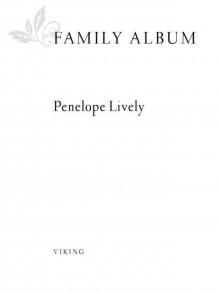 Family Album
Family Album Life in the Garden
Life in the Garden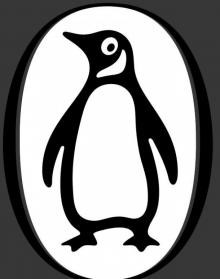 Oleander, Jacaranda: A Childhood Perceived
Oleander, Jacaranda: A Childhood Perceived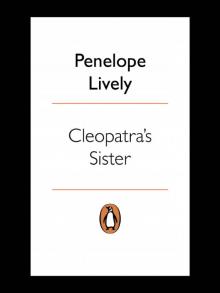 Cleopatra's Sister
Cleopatra's Sister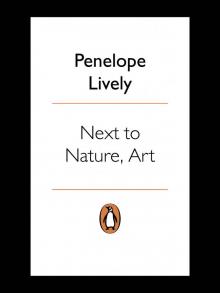 Next to Nature, Art
Next to Nature, Art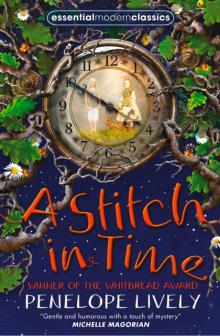 A Stitch in Time
A Stitch in Time Moon Tiger
Moon Tiger The Photograph
The Photograph Heat Wave
Heat Wave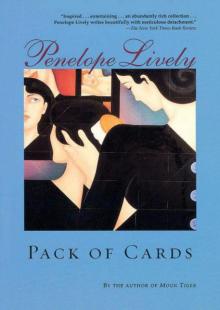 Pack of Cards
Pack of Cards Spiderweb
Spiderweb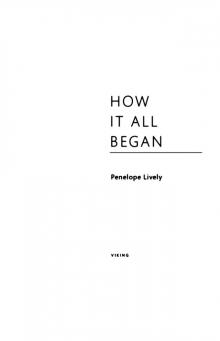 How It All Began
How It All Began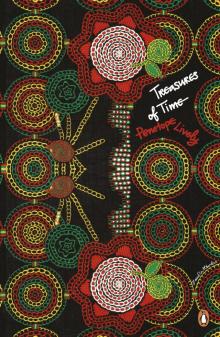 Treasures of Time
Treasures of Time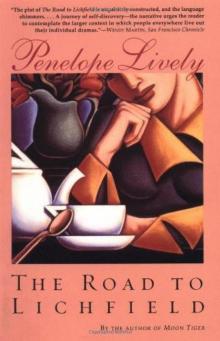 The Road to Lichfield
The Road to Lichfield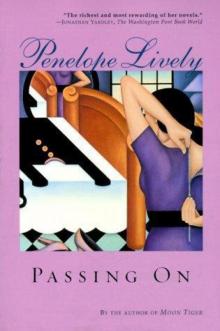 Passing On
Passing On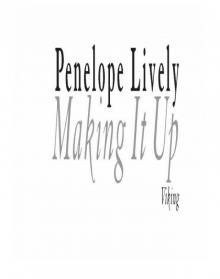 Making It Up
Making It Up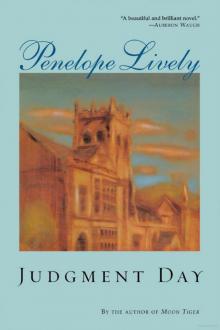 Judgment Day
Judgment Day The Purple Swamp Hen and Other Stories
The Purple Swamp Hen and Other Stories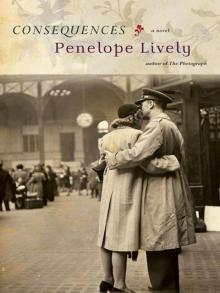 Consequences
Consequences *****Passing On*****
*****Passing On*****